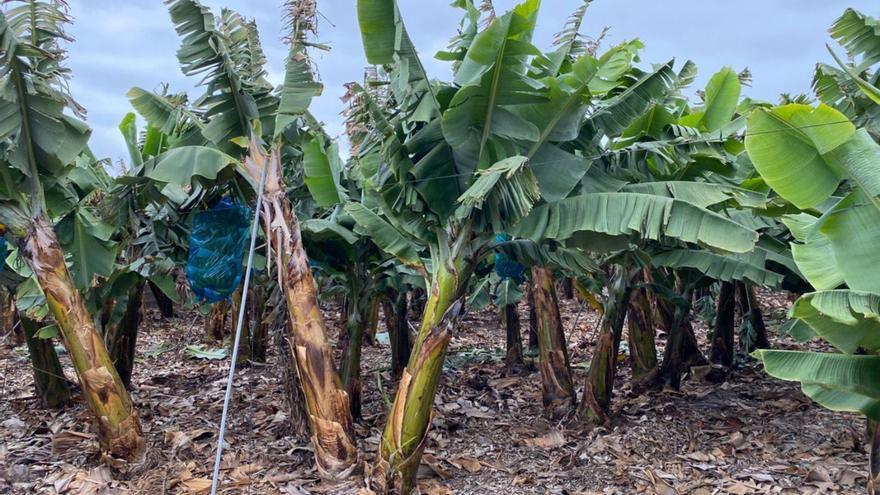
The Council of Tenerifethrough the Technological and Renewable Energy Institute (ITER), studies banana and avocado farms to optimize the irrigation of these crops throughout the Island. The Regadia project, developed together with the Canarian Institute of Agricultural Research (ICIA) and the University of La Laguna (ULL), it will allow to anticipate the needs of the contribution of water for these cultures to seven days vision; that is, with approximately a week in advance. This will allow planning.
Regadia also includes an analysis of the most important regions of the Island where I grow plantains and avocados with the aim of making decisions about the irrigation of the farms under study and anticipating the needs for water supply of these crops in the aforementioned time horizon. . Once a sufficiently representative data set is available, work will begin on predictive irrigation models using artificial intelligence (AI) techniques.
Bananas are the crop with the highest water demand in Tenerife and represent 60% of the island’s agricultural water consumption. On the other hand, avocado cultivation, which requires a high water supply, has been growing exponentially in recent years.
technical visits
The ITER technicians, thanks to the support of the Irrigation Office of the Cabildo de Tenerife, They have made visits to several of the banana and avocado farms to evaluate the characteristics of the plots where water meters and humidity sensors will be installed. ITER is also working on the development of electronic devices that will be installed in the field to, on the one hand, collect the data from the sensors and, on the other, send them to a cloud storage service that will be installed and available at the Institute’s supercomputer (HPC) for subsequent exploitation within the framework of the project.
60%
agricultural water consumption
The banana plantation occupies the second place in cultivated area after the orchard (20%). It requires the highest water demand in Tenerife with 60% of the total consumption of agricultural water.
In parallel, the ICIA has begun to analyze soil samples from representative farms, with the aim of characterizing the water retention capacity and thus providing valuable information to the predictive models.
The Regadia project, coordinated by the ITER Robotics Unit, will last 36 months and is financed by the Ministry of Science and Innovation and the State Research Agency and by the European Union within the framework of the Next Generation Recovery Plan and of the Recovery, Transformation and Resilience Plan of Spain (PRTR).
The work process consists, among other tasks, of parceling out the farms that are part of the study; place tension sensors to obtain data and collect soil samples in the analysis for the characterization of the soil.
The Minister of Agriculture, Livestock and Fisheries of the Cabildo de Tenerife, Javier Parrilla, values in statements to EL DÍA: «Avocado cultivation has experienced a substantial increase in area in our area, and still being very respectful, since it mostly recovers abandoned spacerequires achieving the highest efficiency in irrigation.
To achieve this, says Parrilla, the Irrigation Island Office “has been working since 2020 to reduce water consumption in banana plantations, with decreases of up to 15%.” He adds that “our main objective has been to treat the sector in its most professional aspect.” He emphasizes the importance of “helping the farmer to reduce production costs, as well as accompanying him”.
Parrilla emphasizes the initiative to “make available to the island producer a greater flow, of better quality and at a better price, such as that provided by reclaimed water.”
He comments in this regard that “experimental programs that serve to optimize and rationalize the water dedicated to agriculture will always be an interesting proposal in territories such as the island where water pressure is constant.”
Defense of reclaimed water
The primary sector counselor concludes: «All the observatories and tools that can be used for this function will serve and have an impact on a more sustainable use of resources, which must be cared for and pampered to the extreme, as is already done since the generation of treated water from treatment plants.
According to the latest Crop Map of the Government of the Canary Islands, Tenerife has just over 43,000 hectares of agricultural land, 21% of the island’s territory. 43%, some 18,800 hectares, is cultivated, while the rest is currently abandoned or fallow. The orchard continues to be the predominant cultivated area on the Island (43% of the total), followed by banana trees (20%), vineyards (15.6%) and fruit trees (12.7%). The increase in the orchard has focused in recent years precisely on the fallow system, farmland that is left to rest; that is, it is not planted for one or more years.
The commercialized banana production stood in 2021 at Canary Islands over 409 million kilos. With this volume sold, the turnover of the production sector reached 396 million euros last year. A volume of business that made it possible to maintain the activity for the 12,000 jobs managed by the sector on the islands. Tenerife represented 45% of the total production.
Doubles area in ten years
Avocado is the fastest growing agricultural product in Tenerife in recent years. In a decade it has doubled its cultivated area to almost 800 hectares and increased production. As a mere example, it went from 1.7 million kilos in 2012 to more than 4.29 million in 2020. The main varieties grown on the island are Hass, and to a lesser extent Fuerte, according to data from the Cabildo de Tenerife in a statement. Currently it expands outside the traditional limits of the Valleys of Güímar and La Orotava, with plantations in almost all of the coastal municipalities. There are more than a dozen associations of avocado producers on the island. The avocado has not occupied other cultivars, but rather has collected vacant and abandoned land, which contributes to the maintenance of landscapes and agricultural soils. Of course, it requires a lot of water. | JDM















